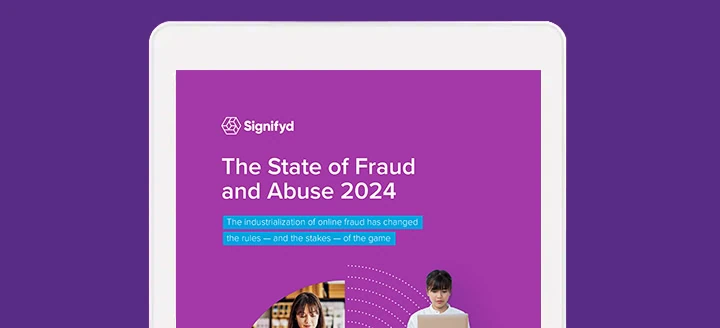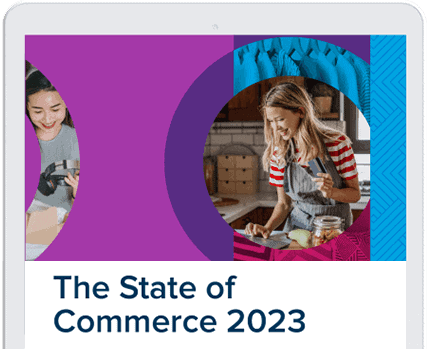It was hard not to buy something online in July, what with major retailers looking to capitalize on Amazon Prime Day momentum with their own cleverly-named discount events. Coupled with the July 4th holiday and early back-to-school enticements, ecommerce sales rose across all verticals and increased 9% for the month over last year, according to Signifyd’s pulse data.
Retailers brought their A-game: Walmart offered a genius marketing lure that let us glimpse into the shopping carts of NFL player Patrick Mahomes, singer Becky G and Barbie. Who knew Mahomes has shopped at Walmart since he was a kid?
It was hard to look away.
Ecommerce data came with surprises in July
In July overall, electronics led all verticals with a 20% increase year over year, followed by sporting goods (up 15%), health and beauty (up 10%), apparel, accessories and footwear (up 6%) and home goods (up 4%), Signifyd data shows.
“Amazon had plenty of competition for Prime Day this year with both Target Circle Week and Walmart Plus Week happening simultaneously, giving consumers several options for the sales they shop,” Koen Looijmans, executive vice president of Retail PX at Productsup, told Retail Dive by email. “Something that stands out, however, is that both Target and Walmart held longer sales (seven and four days) compared to Amazon’s sought-after two-day shopping extravaganza. Perhaps, as an attempt to capture customers who missed Amazon’s short window.”
Spending less for more (what a concept!)
Sporting goods sales soared to 15% in July, year over year, boosted by a 47% sales increase in outdoor camping items, according to Signifyd data. Discounts apparently played their part, with the number of transactions up 32% from last year while the average order value (AOV) was down 12%.
Sales in the apparel vertical also showed a year-over-year increase in transactions (4%) and a lower AOV (-2%). Home goods also saw a year-over-year transaction increase (3%), but no movement in the AOV (0%), Signifyd reports.
But other verticals didn’t fare so well.
Ecommerce shopping statistics yield a mixed bag
Sales of health and beauty items rebounded significantly in July from its recent lackluster performance to rise 10% year over year, but consumers still paid more for those face creams – transactions rose 5% while the AOV rose 12%, year over year, Signifyd data shows.
This ongoing trend of spending less money on more items, or looking for cheaper alternatives or smaller quantities, continues to be indicative of the savvy shopper navigating the ongoing inflationary and uncertain economy.
Growth of online shopping beyond Amazon
“In an event typically dominated by electronics, we instead saw many shoppers stocking up on everyday essentials like pet food or pantry staples,” Numerator analyst Amanda Schoenbauer said of Prime days in a statement to Digital Commerce 360. “It seems many used the event to save on their standard purchases or held off on buying larger-ticket items until the sale came around.”
Amazon’s July shopping event also no doubt fueled the shopping enthusiasm that spilled over to retailers not named Amazon, resulting the strong mid-summer sales.
- Coupled with competing sales by other retailers, spending during Amazon’s two Prime days (July 11 and 12) brought $12.7 billion in online sales, a record for U.S. ecommerce in general, according to Adobe Analytics.
- Major discounts during Amazon’s Prime days were in electronics, which peaked at 14% off the listed price, followed by apparel and toys (12% off), home/furniture (9% off), computers (8% off), appliances (7% off), sporting goods (6% off), and TVs (5 % off), according to Adobe.
- Numerator’s survey of Prime shoppers showed that home goods led the sales with 27% of respondents saying they’d made a purchase in the vertical. That was followed by home essentials (26%), apparel and shoes (25%), electronics (21%) and beauty products (20%).
- The single best-selling product (units sold) in Prime days was the Fire TV Stick (3rd Gen) with Alexa Voice Remote; the top product in dollars was the Apple Watch Series 8, according to Numerator.
Fraudsters aren’t picky, ecommerce fraud trends show
Fraudsters unleashed a myriad of spoofing attempts in July, with the health and beauty vertical receiving more than its fair share – identity and device spoofing attempts soared to 510% and 372%, respectively, Signifyd data shows. Those schemes were prominent along with phishing, spoofing, smishing, scams that are launched to get shoppers to disclose personal and credit card information so fraudsters can steal their money, infiltrate online accounts or steal identities.
What are the most recent scams?
For instance, fraudsters employ phishing schemes to lure consumers to click on a falsified email or a phone number, or by creating websites to mislead and appear legitimate. The idea is to gain shoppers’ trust and collect personally identifiable information, including credit card details, from them.
Photo by Getty Images
Curious about where your sales stand compared to industry leaders?
If successful, and with bots on-the-move, fraudsters use this personal information to take over accounts or make fraudulent purchases, one way or another: They may attack early in the shopping process or infiltrate active existing or aged accounts that are sometimes forgotten or just lingering online, sometimes with a credit balance or stored-up loyalty points.
Aged account pressure in the health and beauty vertical rose 304% in July from last year, and 222% in electronics, Signifyd data shows. Overall across all verticals, aged account pressure rose 169% in July from a year ago.
Generative AI inspires new ecommerce fraud trends
Signifyd shuts down these attempts with AI, which it’s used in fraud detection for more than a decade. But with new awareness and availability of AI, even to fraudsters, criminal rings could step up their game by alleviating their somewhat poor-grammar-laden emails and mock websites. With Chat GPT, even fraudsters will be able to produce authentic-looking material.












